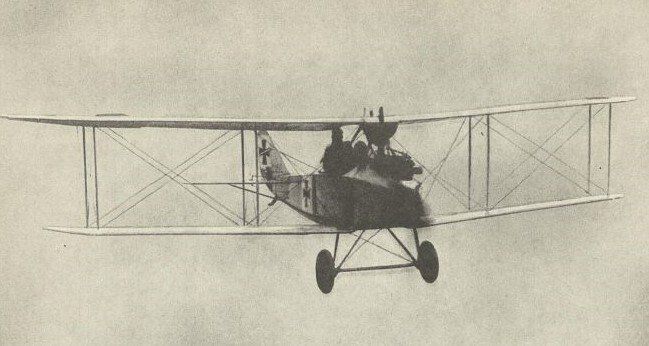28 Nov. 1916
Bombed: London
After undertaking three raids on Kent (Dover, 24 April and 12 August 1916, and Sheerness on 22 October), Leutnant Walter Ilges now targeted London. With his pilot, Deck Offizier Paul Brandt, the two men of Marine Landflieger Abteilung 1 took off from Mariakerke in a L.V.G. CIV on in the morning, intending a combined bombing and photo reconnaissance mission. Their bombing target was the Admiralty building in Whitehall. Flying up the Thames estuary at great height and in a hazy sky, few if any noticed their progress. Giving Sheerness a wide berth, they brought their aircraft inland west of that town and passed over Maidstone and Reigate before turning north and following railway lines towards the capital.
Once over London, flying at 13,000 feet, the crew prepared to drop their six HE 10kg bombs. Using a map, Ilges thought he had identified the Admiralty and dropped all six bombs in quick succession over the Knightsbridge/Belgravia area of south-west London. The first, dropped at about 11.50am, damaged buildings at 108 Brompton Road occupied by bakers Spiking & Co., where a woman received minor injuries. The second bomb struck 15 Pavilion Road, home to the London Pure Milk Association, where it injured a woman and caused damage to the packing room, office and a store, and minor damage to the building next door, as the aircraft followed an easterly course. Crossing over Sloane Street, the next bomb landed on the back of 13 Lowndes Square where it smashed the roof, while fragments penetrated down through the house. At Belgrave Mews East, the fourth bomb exploded in the roadway, injuring four men and a woman in the street and smashing windows nearby. The next detonated at the rear of 112 Eaton Square, damaging the house and causing lesser damage to four neighbouring properties as well as three in Eccleston Mews. Two women received treatment for cuts caused by flying glass. The final bomb, which Ilges believed dropped about 300 yards from the Admiralty building, actually hit the roof of the Victoria Palace music hall on Victoria Street where it damaged the roof above a dressing room and injured a cleaner, Louisa Cameron. The bomb also smashed windows in another five properties.
Their bombs dropped, Ilges and Brandt left London on a south-east course and headed back towards the coast. In noisy London in the middle of the day few realised the city had just experienced an air raid. The noise of the small bombs did not travel far and those that did hear an explosion initially presumed it was caused by gas. It was about an hour before the authorities realised what had happened and ordered aircraft up to intercept the raider. Ilges and Brandt were already back at the coast near Hastings by then. While out over the English Channel, however, they experienced serious engine problems. They threw their camera and photographic plates overboard but continued to lose height. Unable to get back home they landed near Boulogne, managing to set fire to their aircraft before they were taken prisoner by the French.
L.V.G. CIV
Casualties: 0 killed, 10 injured
Damage: £1,585
